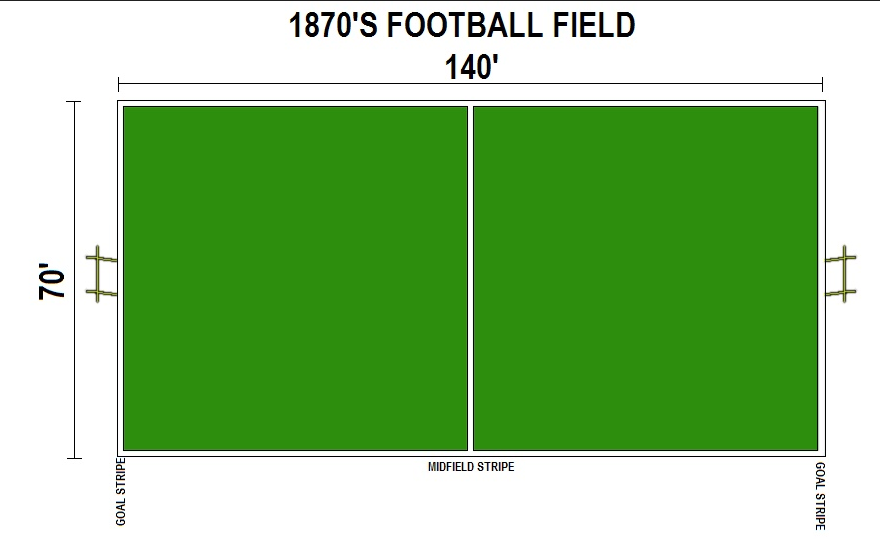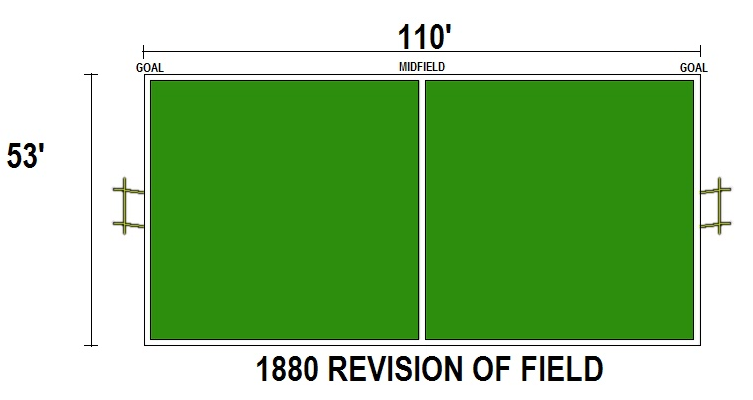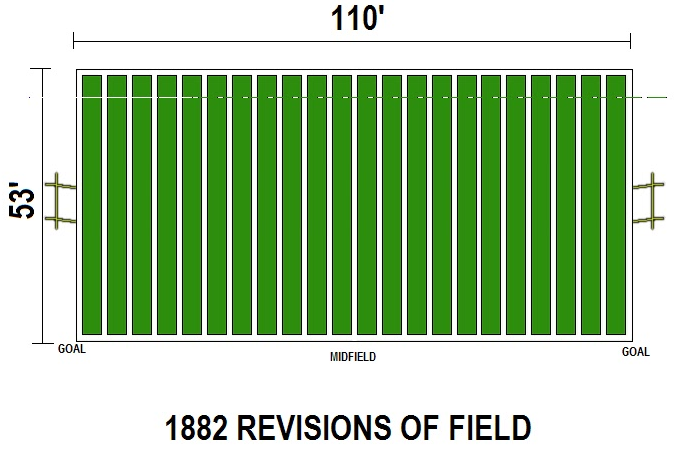The Size of the Field was a Wild Ride
The fun facts about football in this edition are about the playing field itself.
How wide is a football field? How long is a football field? Was the field always this size? These are some questions you may have had and we are set on answering in this post. Everything from the football field's hash mark dimensions and history to other football field dimensions and how they came to be are covered here!
According to Parke H. Davis in his 1911 transcript Football the Intercollegiate Game the Spartans played their game of “harpaston” was played on a rectangular field that had two side lines, two goal lines and a centerline. The Romans under Augustus played a more brutal form of the game called harpastum that was a mix of the Spartan game and a similar Roman game called folle. Davis tells us later in his text that after the Roman Empire had run its course the Italian citizens continued to play a game similar called calcio. Calcio changed the field of play to a square marked by sidelines, goal lines a center line and the goals being marked by posts.
The actual sizes of the fields were not really regulated or specified in the ancient predecessors of American football including soccer and rugby until the late 19th century or about the same time that Americans standardized their own playing field size. The first American football game is credited to Princeton vs Rutgerson November 6, 1869 on the very spot where Rutgers gymnasium now stands in New Brunswick, NJ. It unknown what the exact field dimensions were for this contest.

A rules meeting on October 15, 1871 by the Princeton Football Association whereby they decided the field should be 500 feet in length by 300 feet in breadth ( over 166 yards long x 100 feet wide) and goal posts being 25 feet apart. The field's enormous size was aided by each side having 25 players on the field at a time in this soccer style game.
The men of the Yale Football Association changed the field size once again in their October 31, 1872 meeting. They reduced the goal post width to 8 feet apart and the playing field was shrunk slightly to 400 feet (133.33 yards) long by 250 feet in breadth (84-⅓ yards wide) for its 20 players to a side.
According to Parke H. Davis in his 1911 transcript Football the Intercollegiate Game, a rules convention held November 26, 1876 had a field size revision to make the field 70 yards wide by 140 yards long with a mid-field stripe. This held form until a very significant rules meeting took place in late 1880.

Walter Camp, at the 1880 rules convention made what many believe to be the largest transformation and most significant of rules revisions in the history of the game. Players were limited to 11 for each team on the field during play and the evolution of a snap was created along with the positioner of snapper-back (now called center) and quarterback. Limiting players to eleven per side during play and the creation of scrimmage was huge for deciding on the size field to house their play. According to Robert Lecke’s, The Story of Football, the field was sized down to a tidy 110 yards long x 53 feet wide. This allowed Camp to bring the 7 linemen in tight together and make the formations look very similar to what we would call the T-formation.

In 1882 lines were installed to the field at every five yards in between the goal lines to aid with rules of the time. These lines were expanded to go from goal line to goal line too in photos from 1903 to 1911 as college rules makers were desperately trying to tame the game due to excessive injuries and deaths raising public outcry to get rid of the game altogether. The criss-cross lines formed a “grid” pattern and soon the name “gridiron” was coined to describe the look of the field. The credit to the game being called Gridiron is credited to a 1911 article in Outdoor Sports and Games, by Claude H. Miller. The original purpose of the extra lines were for penalty enforcement based on how far away an offense was to the ball carrier. These lines eventually faded away with later rule revisions but did give way to hash marks and the nine yard marks (the tops of the numbers) being used in 1933.

A 1912 rule added a ten yard deep end zone at each end protruding past the goal line, which would have suggested making the fields 130 yards long. Since this size would not fit in many of the college stadiums that had already been built it was decided to make the American field be 100 yards goal line to goal line with another 20 yards spared for the end zones. Thus the basic size of the field was created for the modern game.
The turf makeup is something altogether different of which we will discuss in a later article in this series.


